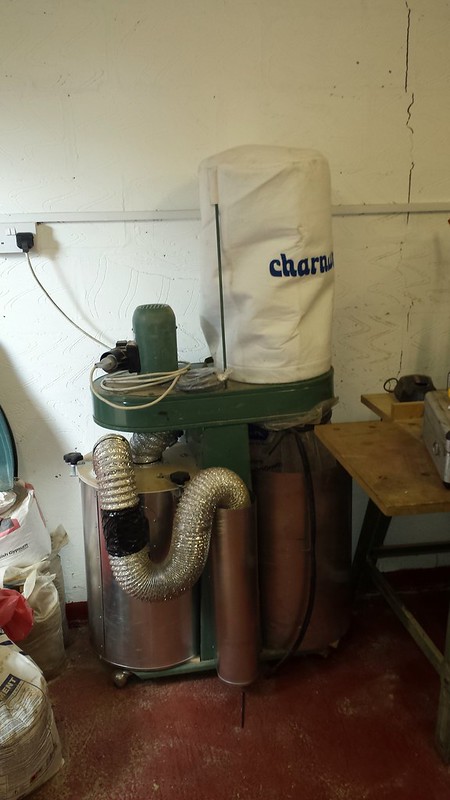Ok. Based on your dimensions, I think your pressure drop is around 200mm of water and your 50% particle separation efficiency should be about 1.3 microns. This compares quite well with other designs - for example, Bill Pentz's 18" cyclone with 1,000 CFM air flow works out to give a pressure drop of 160mm water and a 50% separation efficiency of around 3.5 microns. I am using some theory published here to get to these numbers, if you are interested:
www.svarovsky.org/fps2/GASCYC.pdf
What is the configuration that you have attached below the cyclone? The separation efficiency is negatively affected if it is not sealed as you can then draw gas in from the bottom of the cyclone cone. Also, you need a clear space below the bottom of the cone (i.e. don't let debris build up near to the bottom of the cone in the hopper).
Your cone dimensions are quite different to Pentz's - the slope of the cone is a little over half that which he recommends (as a result your cone length ratio is higher) and the hole at the bottom of your cyclone cone is quite a bit bigger than the inlet and outlet ducts. The vortex cone in the cyclone reaches a long way down - because of your large dust discharge hole diameter, I suspect it may be going right down into the hopper itself.
Lastly, the inlet design on a cyclone is really quite critical. The objective is to get the inlet material swirling down round the inside walls of the cyclone as smoothly as possible. For this reason, inlets generally are rectangular in section to bias the inlet flow towards the wall of the cyclone cone, are often introduced at a downward angle to give the incoming air downward momentum into the cyclone cone, and sometimes use a ramp to also give the air more downward momentum and minimise mixing with the inner vortex which is flowing upwards towards the cyclone air outlet.
Based on the described performance of your system, I am quite convinced that you should be expecting better separation performance than you are getting. However, I really do think that the cyclone you have built is overall sized very well for your system - it's some design detail that is not right. I don't think just building a bigger cyclone or Thien baffle is the right answer - although if you happen to get the design of that right, then you may find the performance is better. Cyclones are tricky things to get right, but worth persevering with. I hope some of this is helpful to you - and happy to be of further assistance if required.
































